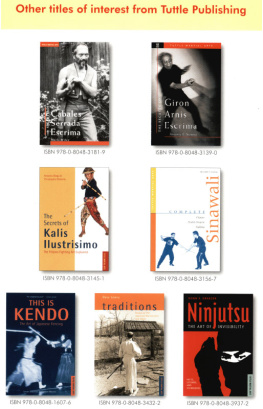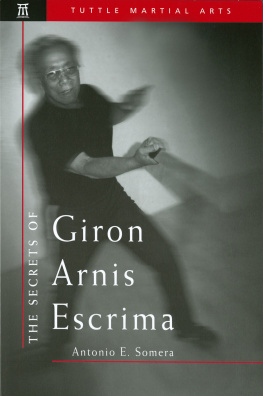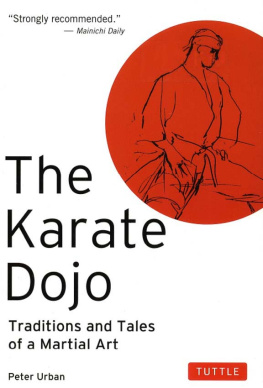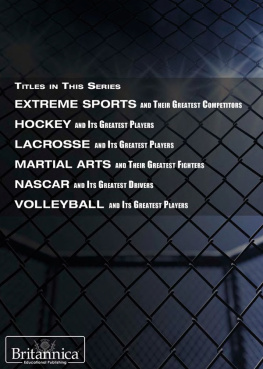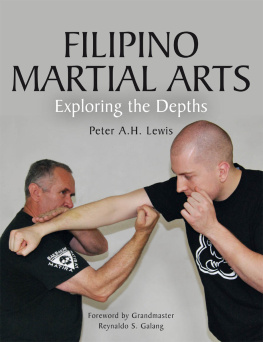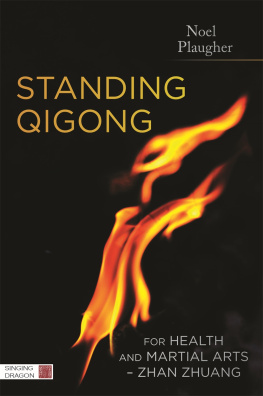About the Author
Mark V. Wiley, an internationally renown martial arts master and scholar, has been involved in the martial arts for twenty years. He is currently ranked as a master instructor in the Cabales serrada escrima and Bias dynamic arnis systems of Filipino martial arts. In addition, Mr. Wiley holds various instructor ranks in arnis Escorpizo, modern arnis, taekwondo, kenpo karate, Shiho Karano-ryu jujutsu, wing chun kung-fu, boxe Francaise savate, and jeet kune do concepts. He has also received formal instruction in the internal disciplines of taijiquan, qing long san dian xue mi gong fa qigong, Indian hatha yoga, and Theravada Buddhism (vipassina meditation).
Mr. Wiley wrote the best-selling book,Filipino Martial Arts: Cabales Serrada Escrima, has written martial arts entries for the Encyclopedia of World Sports, the Encyclopedia of Body Mind Disciplines,andA Martial Arts Encyclopedia,and is the author of over fifty articles which have appeared in leading martial arts magazines and journals including theJournal of Asian Martial Arts, Black Belt, Karate/Kung-Fu Illustrated, Martial Arts Training, Wu Shu Kung-Fu, Qigong Kung-Fu, Karate International, Inside Kung-Fu, Tambuli,andPhoenix.
Mr. Wiley has traveled internationally throughout Europe, Southeast Asia, and the Far East conducting Field research and giving seminars on the history, philosophy, and techniques of various martial disciplines. He currently serves as martial arts editor for the Charles E. Tuttle Publishing Company, associate editor for the Journal of Asian Martial Arts, and is the co-founder of talahib-marga, a cross-cultural, martial-meditative discipline.
Appendix 1
Generic Terms for the Filipino Art of Weaponry
| armas de mano |
| arnes de mano |
| arnis |
| arnis de mano |
| dalan ti armas |
| didya |
| escrima |
| esgrima |
| eskrima |
| estocada |
| estoque |
| fraile |
| garote |
| kabaroan |
| kadaanan |
| kali |
| kaliradman |
| kalirongan |
| pagaradman |
| pagkalikali |
| pananandata |
| pangolisi |
| saksakan |
| sinawali |
Appendix 2
Styles of Filipino Fighting Techniques
| abaniko |
| abierta |
| bahad |
| banda y banda |
| boca de lobo |
| bolante |
| cadena real |
| contra compas |
| cruzada |
| de cadena |
| de fondo |
| de marina |
| de salon |
| doblete |
| estrella bartical |
| for et e |
| fondo fuerte |
| lagas |
| lastiko |
| layaw |
| lengua de fuego |
| media fraile |
| mizcla contras |
| ocho-ocho |
| pluma |
| redoble |
| redonda |
| riterada |
| rompida |
| serrada |
| sinamak |
| sumbrada |
| sunkite |
| tero pisada |
| tiradin |
| todosan |
| uhido |
| warwok |
Appendix 3
Name Classifications of Filipino Martial Arts
1. Systems named after the area in which they were developed (i.e., Bicolano arnis; arnis Pangasinan)
2. Systems named after their founder (i.e., Bias dynamic arnis: kalis Ilustrisimo)
3. Systems named after their most distinguishing technical characteristic (i.e., lapunti arnis de abaniko; doblete rapillon)
4. Systems named after their favored fighting range (i.e., Cabales serrada eskrima; lameco eskrima)
5. Systems named after their composite styles (i.e., Vee arnis jitsu; Tobosa kali-escrima)
6. Systems named after Filipino national heroes (i.e., Rizal arnis)
7. Systems named after historic places (i.e., Balintawak arnis)
8. Systems named after the weapons of former enemies (i.e., estocada; espada y daga)
9. Systems named after or inspired by religious elements (i.e., San Miguel Eskrima; Tres Personas Arnis)
Appendix 4
Systems of Filipino Martial Arts
| abaniko de sunkite |
| arnis Escorpizo |
| arnis Defense Silat |
| arnis Fernandez |
| arnis Lanada |
| Balintawak arnis |
| Balintawak arnis |
| cuentada |
| Balintawak super |
| cuentada |
| balsakan |
| Batangueno serrada |
| Bayson style |
| Bicolano arnis |
| Binas dynamic arnis |
| bultong |
| buno |
| Cabales serrada |
| escrima |
| cadena de mano |
| cinco tero arnis |
| dama |
| de campo uno-dos- |
| tres orihinal |
| decuerdas escrima |
| de pluma arnis |
| derobio eskrima |
| D'Katipunan Arnis |
| doblete rapillon |
| dumog |
| escrido |
| gabbo |
| garong |
| Giron arnis/escrima |
| hagibis |
| hinaplos arnis |
| Indangan eskrima |
| kalis Ilustrisimo |
| kuntaw lima-lima |
| kupulubod |
| La Costa kali |
| lameco eskrima |
| lampugan |
| lapunti arnis de |
| abaniko |
| Largusa/Villabrille |
| kali |
| Lastra arnis layung |
| lightning scientific |
| arnis |
| Mena arnis |
| modem arnis modem |
| mano-mano |
| modemo largos |
| Moro-Moro Orabes |
| Heneral |
| pananandata |
| Marinas |
| panantukan |
| pangamut |
| pantok |
| pekiti tirsia kali |
| purgos |
| Rigonan-Estalilla |
| kabaroan |
| Rizal arnis |
| sagasa |
| Sayoc kali |
| siete pares arnis |
| sikaran |
| silaga |
| sinayoup kali |
| Sulite style |
| sunkite arnis |
| talahib |
| tapado |
| Tendencia arnis-hilot |
| Tobosa kali/escrima |
| tulisan |
| Vee arnis |
| Vee arnis jitsu |
| yaw-yan |

In 1972, the late Donn F. Draeger wrote an exhaustive work titled Weapons and Fighting Arts of the Indonesian Archipelago. It soon became a classic and remains today among the most comprehensive volumes on the fighting arts of any given country. In 1974, Robert W. Smith wrote his anecdotal book, Chinese Boxing: Masters and Methods. Interesting and insightful, Smith's collection shed light on the lives and martial styles of a number of renown Chinese martial arts masters. These two books inspired and motivated me to write a text on the martial arts of the Philippines that would include both the historical and descriptive analysis of Draeger's work and the anecdotal life-histories of Smith's. In addition, I wanted this project to reflect my background in anthropology and sociology, but not be confined to cumbersome theoretical discourse. The chapters in Part Two and the book's conclusion, however, reflect the writing style and analytical methods of the social sciences proper. It is my hope, then, that this will generate an interest in other scholars to consider the subject of martial arts as a topic worthy of further investigation.

